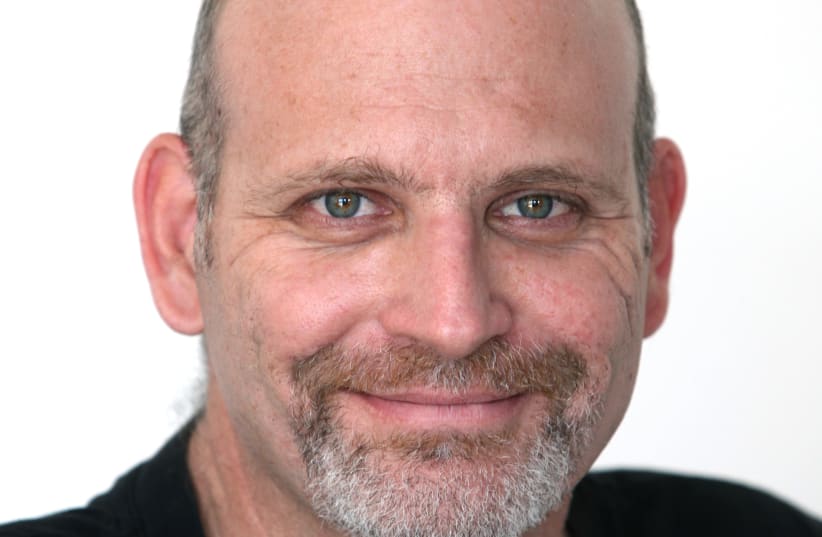This is an epic tale – of love and tragedy, of a hero and an implacable enemy. A young man travels to a distant land to seek a new life, succeeds in building a family and reaching the top of his craft, but is struck down by one of the most malevolent of foes, ALS, a crippling degenerative muscular disease.
Esteban Alterman, who died at home in Jerusalem on June 20, was a warrior and a perfectionist. A brilliant photographer, he battled his illness and continued shooting until he could no longer hold a camera.
Indefatigable in pursuit of the perfect shot, no obstacle was too daunting, no distance too far – in 1994 he left Israel to fly to Argentina to photograph the aftermath of the terrorist onslaught on the Buenos Aires Jewish community, which killed 85 people.
He was brought up in Buenos Aires, where he was born in 1963. He father, Ricardo, a neurosurgeon, dabbled in photography at home and young Esteban caught the bug. In 1992, he showed up at The Jerusalem Report and, although untrained, managed to obtain a position as a photographer. He soon won his spurs, always getting just the right picture to enhance the story.
Shortly after, on assignment in Rishon Lezion, he met the love of his life, Alejandra, a tourist from Argentina, in a burekas shop. She came back to join him and in 1996, they were wed. By 2001, they had two fine children, Tamar and Yonatan. The future looked rosy; Esteban had become a widely respected photographer and was promoted to the position of Photo Editor and Alejandra taught math at a local school.
He was at the peak of his profession taking care of all the photographic demands of the magazine. If you needed an image to sum up a complicated situation, or capture the essence of a subject, Esteban was the address.
But nemesis lurked. The assault was slow but remorseless. The daring picture taker, who had dashed with his heavy equipment over barren deserts, snowy mountains and chronicled the outrages of fiendish terrorists at home and abroad, found his limbs weakening. He needed a walking stick, then a walker. He could no longer schlep his heavy camera bag. He recruited Alejandra to help him set up shoots.
Then, in December 2007, came the dreaded diagnosis – amyotrophic lateral sclerosis. But he did not surrender to the evil pathogen, he fought back with tenacious fortitude. No longer capable of operating a camera, he switched to the computer, and, despite being confined to a wheelchair, carried on with unabated vigor and expertise as photo editor.
When it became impossible for him to get to the office, he worked from home. Finally, after 22 years of sterling service, he was dismissed by the Report.
The highlight of Esteban’s professional work was a retrospective exhibition of his portraits, “Life in a Frame,” held at the Jerusalem Theater in 2009. David Rubinger, one of Israel’s greatest photojournalists, agreed to select the photos on condition that they conformed to the highest professional standards. That did not turn out to be a problem. Rubinger had more than enough to choose from.
The twin resources enabling Esteban to successfully battle the demon disease for an extraordinarily long period were his obstinate courage and the unlimited love and support his wife afforded him. While his body failed, his mind remained crystal clear and he clung to life to celebrate his children’s bat and bar mitzvahs and enlistments in the IDF.
Alejandra was a rock, working full-time and looking after her husband, children and a household with compassion and courage. She navigated the complex bureaucracy of invalid management; doctors, a health fund, hospitalization, medicines, medical equipment and digital tools, which allowed Esteban to continue breathing and communicating as his muscles weakened. She also had to employ a succession of caregivers, one less satisfactory than the other.
Enter an angel. Lancy Pinto, now 40, from Mangalore, India, arrived at the Alterman home in 2011 and cared for Esteban with total devotion for the next nine years, becoming his greatest friend, says Alejandra.
When Esteban could no longer use his fingers, he learned to type with his lips by means of a device attached to a computer. In 2015, he described this ordeal: “The lips, that once burned when kissing other lips, learned to type. When they do it, I feel the fingers moving and it is painful in the brain. The impotence hurts.” n
The writer was privileged to be a colleague and friend of Esteban Alterman.
